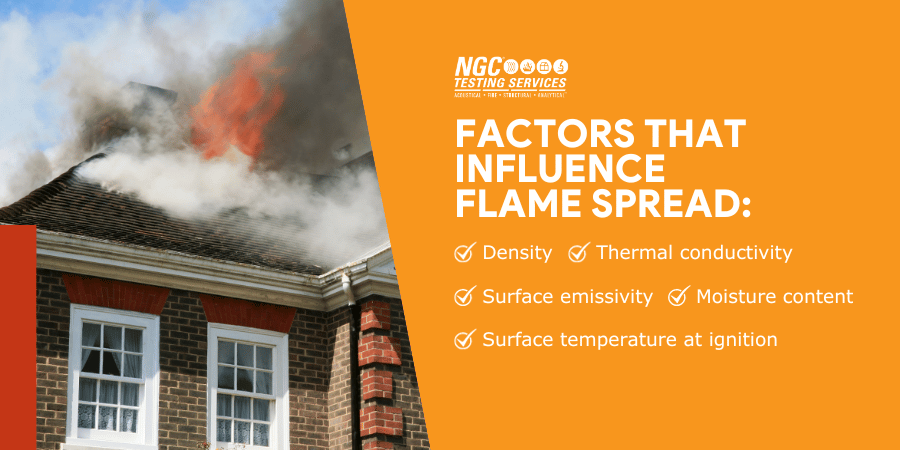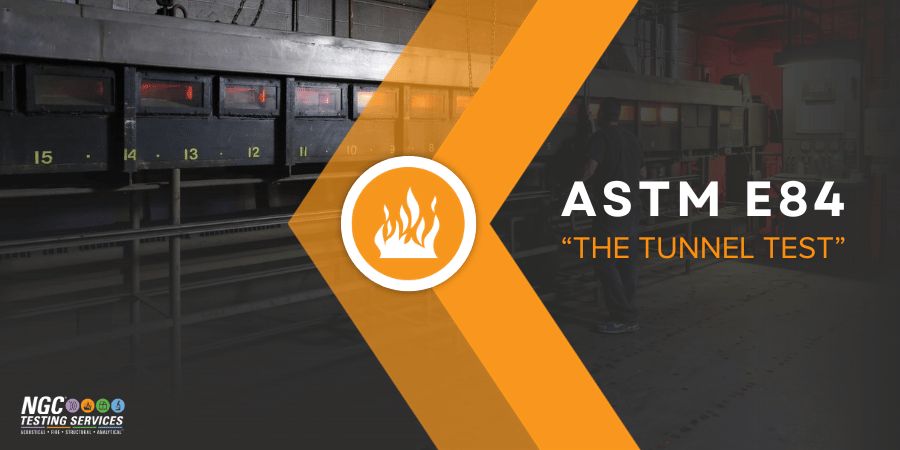Understanding flame spread is essential for driving innovation in building products, selecting the right materials for assemblies, and ultimately enhancing safety and fire protection.
In 2023 alone, fires caused an estimated $23.2 billion in losses, according to the U.S. Fire Administration. That staggering figure underscores the importance of choosing materials that resist flame propagation and help reduce the risk of fire spread.
To protect occupants and property, both the International Building Code (IBC) and International Fire Code (IFC) place strict limits on the flame spread characteristics of structural elements, interior finishes, and other materials based on occupancy type and building use.
By learning how flame spread is measured, classified, and regulated, you can ensure your projects align with code requirements and reflect informed, safety-first decisions.
What Is Flame Spread?
Flame spread refers to how quickly and how far flames travel across the surface of a material once it ignites. It’s measured by both the speed of the burn and the extent of flame movement. Flame spread can occur in multiple directions:
- Vertically, such as up a wall to a ceiling
- Horizontally across a floor or ceiling assembly
This property is also commonly referred to as a material’s surface burning characteristics rating.
What Factors Influence Flame Spread?
With advancements in building materials, today’s market offers a wide range of products that are fire-resistant, fire-retardant, or provide varying levels of passive fire protection. Before selecting materials for your assemblies, it’s essential to understand some of the key material properties that influence flame spread:
- Density: Materials with higher density decrease the rate of flame spread.
- Moisture content: Flame spread can be slowed using materials with high moisture content.
- Surface emissivity: Materials with higher surface emissivity generally decrease the flame spread.
- Surface temperature at ignition: Reducing the use of high surface temperature materials can reduce flame spread.
- Thermal conductivity: Reducing thermal conductivity in materials can help reduce flame spread.

Which Tests Measure and Assess Flame Spread?
Fire testing of building materials, components, and assemblies should be performed in an accredited facility, following the procedures outlined in the relevant ASTM, NFPA, UL, or UBC standards.
Steiner Tunnel Test
The Steiner tunnel is a precisely controlled, horizontal testing chamber measuring 2 feet by 25 feet. Designed to ensure consistent, repeatable results, this tunnel plays a critical role in evaluating flame spread and smoke development. It is named after Albert J. Steiner, the lead UL engineer who developed the method.
Tests commonly performed using the Steiner tunnel include:
- Surface Burning Characteristics of Building Materials (ASTM E84, NFPA 255, UL 723, UBC 8-1)
- Extended Duration Surface Burning Characteristics of Building Materials (ASTM E2768)
ASTM E84, often called the “tunnel test” or “Steiner tunnel test,” is used to evaluate the surface burning characteristics (flame spread and smoke development) of a wide range of products, including building materials, coatings, insulation, finishes, fabrics, and other surfaces that require flame spread classification.

ASTM E2768, commonly known as the 30-minute Steiner tunnel test, is used to evaluate surface flame spread and smoke development under extended fire exposure conditions. This test is primarily used to assess fire-retardant-treated wood, but it can also be applied to ignition-resistant materials.
Conducted in a full-scale 25-foot Steiner tunnel furnace, ASTM E2768 measures a product’s ability to resist surface flame spread over a 30-minute period, providing a more rigorous assessment than standard short-duration tests.
Fire Test for Assemblies
NFPA 285, Evaluation of Fire Propagation Characteristics of Exterior Wall Assemblies Containing Combustible Components, assesses the vertical and lateral flame spread from a window opening along an exterior wall. It requires a full-scale, two-story fire test structure.
During the test, the flame spread cannot reach 10 feet above the top of the window opening and five feet from the centerline of the window opening in either direction, with no flame propagation to the interior of the second-story room. NFPA 285 compliance is required by the IBC for certain types of construction.
Room-Corner Tests
Room corner tests use a full-scale room structure with an ignition source located in the corner of the room. Two fire tests using this structure include:
- Room Fire Test Standard for Interior of Foam Plastic Systems (UBC 26-3)
- Fire Test of Interior Finish Materials (UL 1715)
These tests evaluate a product’s ability to limit fuel contribution, flame spread, and the potential for flashover.
UBC 26-3 is specifically designed to assess the fire performance of foam plastic materials used in building assemblies. UL 1715, on the other hand, primarily focuses on testing the effectiveness of barrier materials in protecting underlying combustible components.
What Are the Different Tunnel Test Flame Spread Ratings?
Each tunnel test will produce a numerical flame spread index (rating), usually 200 or less. Flame spread ratings are grouped into classes, typically identified as A, B, and C, with Class A having the lowest flame spread index (0 to 25). The building code dictates what level of flame spread is permitted.
For example, if a Class C material, with a flame spread rating of 76-200, is permitted by building code, then the majority of wood products may be used as interior finishes without special requirements for fire-retardant treatments or coatings.
Flame Spread Rating Chart
|
Class |
Flame Spread Index |
Smoke Developed Index |
|
Class A |
0-25 |
0-450 |
|
Class B |
26-75 |
0-450 |
|
Class C |
76-200 |
0-450 |
Using the Flame Spread Index to Your Advantage
The flame spread index offers a simple way to ensure materials and assemblies meet all necessary building and fire codes. But your rating is only as good as the testing facility you choose.
When selecting a fire testing provider, ensure IAS accreditation and compliance with the appropriate ASTM, UL, NFPA, or UBC standards. A facility like ours that offers high-capacity cranes, multiple movable test frames, Steiner tunnel testing, and both vertical and horizontal furnaces will be able to handle all your fire testing needs.
Find out how NGC Testing Services can help with your fire testing.
This post was originally published in December 2023 by Mike Rizzo and was updated and republished in June 2025.
Search blog articles
Browse by topic
Subscribe for updates
GET IN TOUCH
Contact Us
NGC Testing Services features one of North America's most comprehensive and unique fully accredited testing facilities. Contact us today to visit our 50,000-plus-square-foot facility located in Buffalo, New York.

